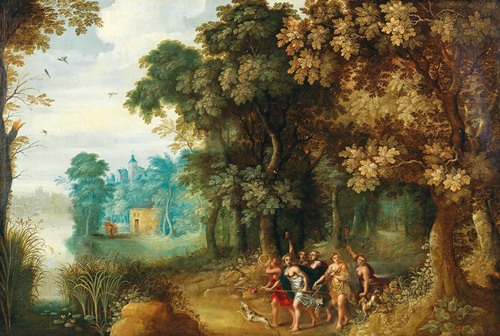
Gerard de la Vallée
Gerard de la Vallée was a Flemish painter of landscapes and history paintings. His work was inspired by the great Flemish masters and mainly produced for the export market.
Little is known with certainty about the life of Gerard de la Vallée. The artist is probably identical with Gerard van den Dale, who was born in Mechelen in 1596 or 1597. He may also have been born in Antwerp. He is recorded in Mechelen on 3 July 1620. He was active in Paris from 1620 to 1625. In 1625 he is again recorded in Mechelen where he produced a painting for the Baroque church called the Onze-Lieve-Vrouw-over-de-Dijlekerk.
In the guild year 1626-1627 he was documented in Antwerp when he registered as a master in the local Guild of Saint Luke under the name Geeraert de la Vallee. A record dated 1636 of the artist acting as a witness for Guillam Forchondt and N. Lemmens is evidence that he was still in Antwerp at the time.
Gerard de la Vallée was a landscape and history painter. His landscapes show the influence of Abraham Govaerts and of Jan Brueghel the Elder. A series of signed works by the artist is preserved in Bogotá.
Gerard de la Vallée's works are often derived from, or inspired by, the works of the great masters of the Antwerp school. For instance in his Ecce Homo (At Jan de Maere), the figure of the Christ is inspired by Anthony van Dyck’s Ecce Homo in the Barber Institute of Fine Arts in Birmingham, England. The mining of images of other masters to create new works for the export market was a hallmark of the Forchondt workshop and is also evident in de la Vallée's work.
